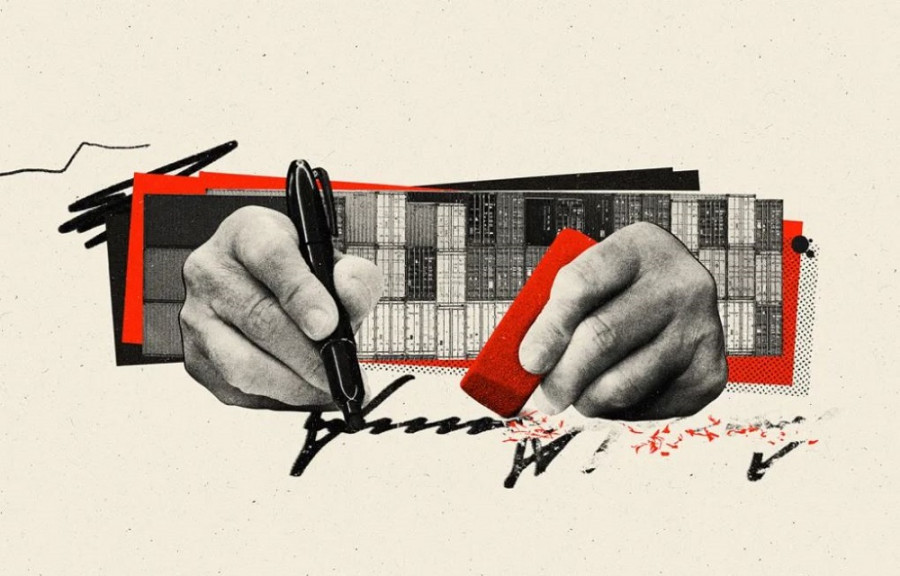Last week, EUR/USD posted its strongest rally of the year, climbing from 1.0882 to a weekly high of 1.1474. A corrective pullback or consolidation phase typically follows such an impulsive surge. However, markets are operating under exceptional conditions, namely a large-scale trade war with rapidly unfolding events. As a result, no respite is expected—volatility across dollar pairs will remain elevated, and EUR/USD will be part of that trend.
The trading week may start with a southern corrective pullback in EUR/USD in response to Donald Trump's recent actions. On Saturday, the U.S. president unexpectedly granted significant tariff relief, adding smartphones and computers from China to the "white list" (previously subject to 145% tariffs). Additionally, other electronic components such as semiconductors, SSDs, solar panels, TV displays, memory cards, and USB drives were removed from the tariff list.
This easing of tariff policy could influence EUR/USD, potentially triggering a bearish counterattack toward the lower 1.13 handle or even below the 1.1300 level.
I think such pullbacks should be treated with skepticism, as Trump's move is not a sign of de-escalation in U.S.–China relations. Rather, it's a pragmatic step aimed at preventing a dramatic surge in prices of electronic goods assembled in China and imported into the U.S.—price hikes that would ultimately fall on American consumers, especially for popular items like iPhones.
Commenting on Trump's decision, White House Press Secretary Karoline Leavitt stated that "America cannot rely on China for the production of critical technologies" and that tech giants like Apple, TSMC, and Nvidia "must relocate their production to the U.S. as quickly as possible." In other words, the administration framed the move as an "opportunity window," not a concession to major corporations.
Therefore, the partial "tariff amnesty" might trigger a price pullback in EUR/USD, but it will likely be temporary—unless real diplomatic efforts are made between the U.S. and China. Currently, there are no signs of a thaw. On the contrary, China has repeated that it is "prepared to go all the way" and has increased talks with the EU to strengthen economic cooperation under U.S. tariff pressure. The U.S. has adopted a wait-and-see approach—according to CNN sources, Trump is waiting for Xi Jinping to request a meeting. Insiders claim that "China has repeatedly refused even a phone call at the leadership level."
This indicates that any southern pullback in EUR/USD, possibly beginning Monday, will likely be corrective and temporary.
It's also worth noting that trade talks between the U.S. and the EU are scheduled for the week. On Monday, EU Trade Commissioner Maros Sefcovic is expected in Washington. Given that the EU is one of the U.S.'s largest trading partners (bilateral trade reached 1 trillion dollars in 2024), a "trade truce" with Brussels could offer significant support for the dollar. However, it is far from guaranteed that Sefcovic's visit will yield results. Many American and European analysts doubt that a "quick deal" is possible—especially since Trump previously rejected the EU's proposal to eliminate tariffs on cars and industrial goods, demanding that the EU instead buy 350 billion dollars worth of U.S. energy.
Furthermore, during Sefcovic's visit, Trump's chief trade negotiator, Treasury Secretary Scott Bessent, will be in Argentina. His absence from the talks is a bad sign, though there's still some hope for a "happy ending."
As last week showed, the FX market will focus on news from the trade war front. All other fundamental factors will take a backseat. Still, some economic events will be worth tracking, so here's a brief calendar rundown:
Key Events for the Upcoming Week
- Monday: Fed officials Thomas Barkin (Richmond Fed) and Christopher Waller (Board of Governors) will speak.
- Tuesday: ZEW economic sentiment indices from Germany are expected to drop sharply (business sentiment forecasted to fall from 51.6 to 10.1). Eurozone industrial production is also projected to drop to 0.1% (from 0.8%). In the U.S., the import price index (another inflation metric) is expected to slow to 1.7% y/y in March, and the Empire Manufacturing index is forecast to improve slightly from -20.0 to -14.8.
- Wednesday: Markets may react to China's Q1 GDP figures, expected at 5.2% (vs. 5.4% in Q4 2024), and industrial production at 5.7% (down from 5.9%). During the U.S. session, retail sales data is due (expected to rise from 0.2% to 1.3%). Fed Chair Jerome Powell will also speak—this is expected to trigger high volatility, as his previous speech was on April 4, before the latest trade headlines.
- Thursday: The ECB's April meeting is the week's main event. Most analysts expect a 25 basis point rate cut. The market has already priced in this outcome, so attention will shift to the ECB statement and Christine Lagarde's tone. Fed members Jeffrey Schmid and Michael Barr will also speak.
- Friday: A quiet day for EUR/USD. San Francisco Fed President Mary Daly is scheduled to speak. Many global markets will be closed for Good Friday (April 18 falls on the same day for both Orthodox and Catholic calendars this year).
Summary
All in all, the upcoming week will be both informative and volatile. The U.S.–China trade war remains the number-one concern for traders. Also in focus will be the U.S.–EU negotiations, where tariff tensions remain paused. Fed officials (especially Jerome Powell) will play a key role—any dovish signals could pressure the dollar further. The ECB is unlikely to significantly influence EUR/USD for now, as the greenback remains the key driver—susceptible to any escalation or de-escalation of the trade war.
I believe the bullish trend in EUR/USD will remain intact until the U.S. and China reach a deal and remove trade barriers. All other "peaceful" fundamental factors will only offer short-lived support for dollar buyers. Targets for the northbound move remain 1.1400, 1.1450 (upper Bollinger Band on H4), and—potentially—1.1500, a major psychological level.












